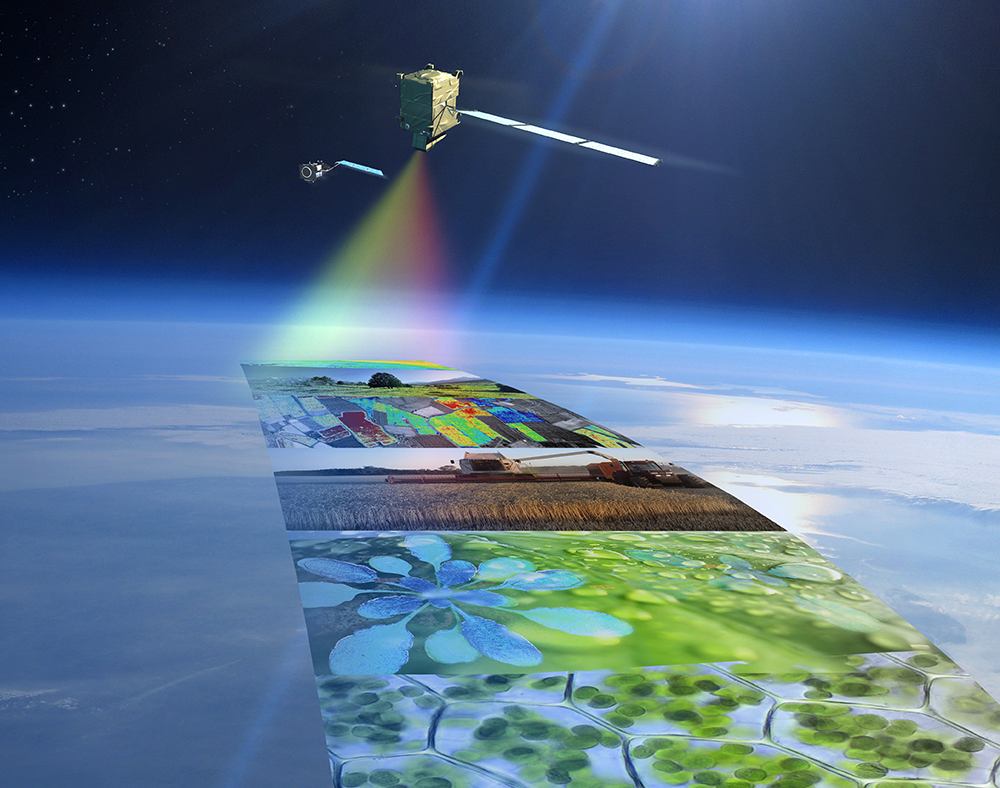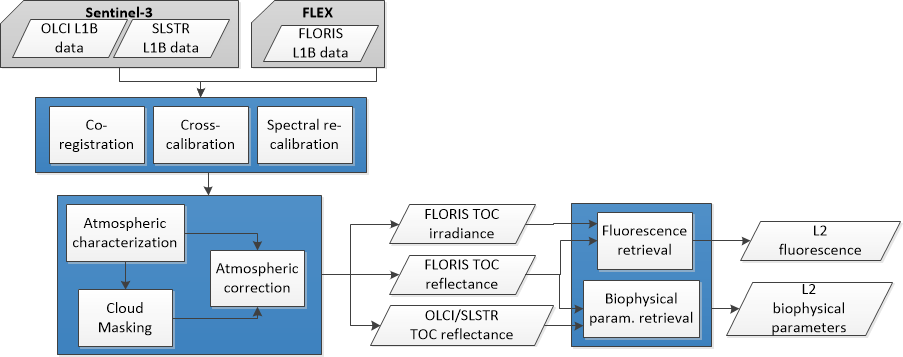FLEX L1B to L2 retrieval study
Development of algorithms and software for L1B to L2D data processing

Mission
Mapping of vegetation fluorescence to quantify photosynthetic activity and analysis of fluorescence signals to provide information on photosynthetic efficiency
Satellites / Instruments
FLEX satellite, Sentinel
Skills
Algorithmic analysis, software development, data processing
Date
From 2018 to today
The FLEX project
FLEX (FLuorescence EXplorer) is an Earth observation satellite. The mission of the same name is part of ESA’s Living Planet programme.
The objective of the mission is to carry out global fluorescence measurements in order to better understand the functioning of the photosynthesis process. In short, FLEX will provide a global mapping of vegetation using an onboard imaging spectrometer. This instrument is called FLORIS for Fluorescence Imaging Spectrometer. The mapping should make it possible to quantify photosynthetic activity.
The objective of the FLEX mission is to analyse the fluorescence signals in order to provide information on the efficiency of photosynthesis. These analyses should improve our knowledge of the carbon stored in plants and its role in the carbon and water cycles. Indeed, fluorescence is a sensitive indicator of photosynthetic disturbance and stress.
Due to the complexity of the mission, ESA is developing a FLEX L2 End-to-End Mission Performance Simulator tool. Therefore, this tool should be used to :
• reproduce the expected performance of the mission
• verify that the FLORIS mission and instrument concepts meet the system requirements
• analyse the suitability of the developed level 1 and 2 (L2) image processing algorithms

Illustration of the FLEX satellite
The EO unit is in charge of algorithm development and performance analysis.
Find more details on the FLEX website.
![]()
The objectives of FLEX
The objective is to provide scientifically consolidated algorithms (via ATBD) and prototype software for the L1B to L2D data processing modules. These elements will be used for integration into the FLEX L2 End-to-End simulator.
• L2A: radiometric and spectral calibration, geometric co-registration
• L2B: atmospheric characterisation, cloud detection, atmospheric correction
• L2C: fluorescence recovery
• L2D : biophysical parameters recovery

Key partners
ESA, Universitat de Valencia, Universita de Milano, Universita di Bologna, Finnish Meteorological Institute
Key words
observation, satellite, earth, studies, fluorescence, spectrometer, algorithm, software, FLEX, vegetation, radiometry, geometry, sensor, carbon, water, photosynthesis, mapping, ESA
SCIENCE FOR EARTH CARE
The Earth Observation Unit of Magellium is an expert in optical space missions and geophysical and biophysical applications. The EO unit provides high level of expertise and full capacity on the whole processing chain, enabling it to respond to all projects from the greatest space orders such as ESA and CNES.

